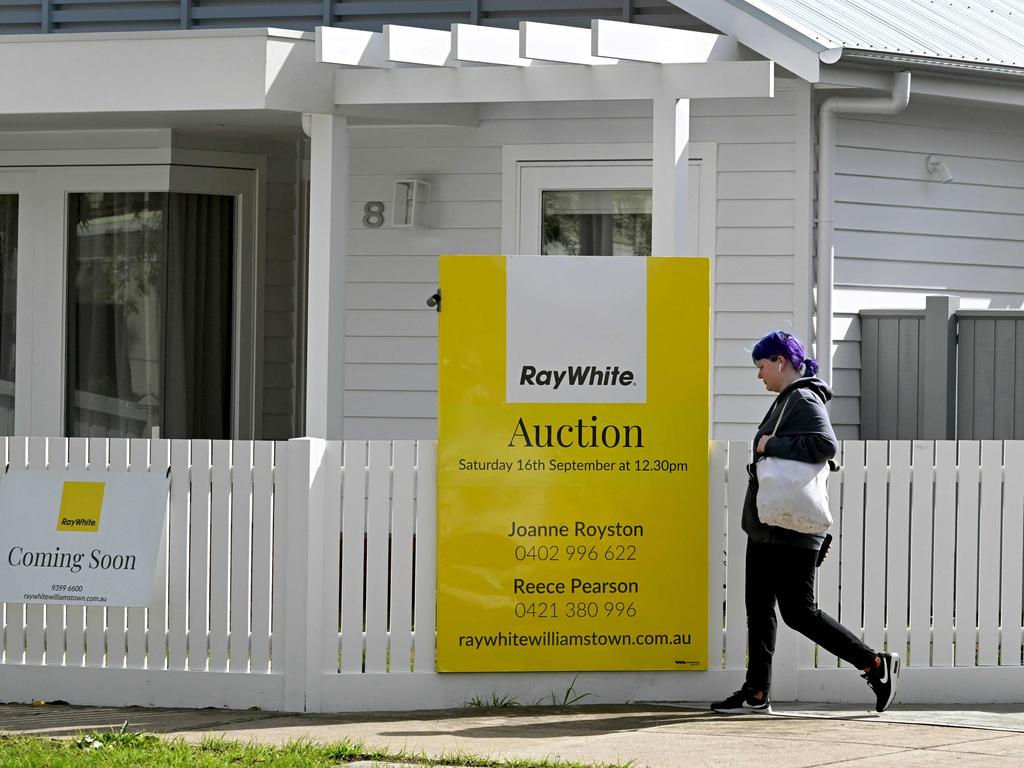‘No rate cuts’: Horror call on Australian economy
Australia’s cost of living crisis is hurting millions – and as calls to raise the cash rate gets louder, the futures market has made a shocking call.
ANALYSIS
Since the Reserve Bank Australia (RBA) first began raising interest rates in May of last year, the volume of commentary on when they would be cut has become greater with each passing month. With mortgage rates having risen to the largest and fastest degree in relative terms in Australian history, this is perhaps unsurprising.
As things stand, rate cuts are generally expected by major bank economists in the second half of 2024. The interest rate futures market on the other hand sees no rate cuts from the current rate of 4.1 per cent all the way out to March 2025.
As calls from certain quarters for rates to be cut continue to grow louder, it’s worth exploring what conditions underpin the RBA cutting interest rates historically and what happens to key indicators such as headline economic growth, housing prices and the labour market afterwards.
But before we get into the data, an important distinction needs to be made between different rate cut cycles. The period from November 2011 to April 2022, only ever saw rates being cut.
With the current economic cycle experiencing the highest inflation since 1990, the rate cut cycles experienced post November 2011, aren’t all that comparable to today’s status quo. For a better analog, we need to go back further, to the rate cut cycles preceded by episodes of very high inflation such as those of 1983, 1990 and 2008.
The 2000-2001 period of high inflation is notably absent from this list due to the impact of the introduction of the GST distorting consumer prices higher during this period.
What does it take for the RBA to cut rates?
At first glance it seems somewhat self-evident when the RBA would cut interest rates, when inflation is below its 2-3 per cent target. But historically rate cut cycles following bouts of high inflation have actually kicked off when inflation has been higher, in some cases a lot higher.
Part of the reason for this historical trend is the fact that the RBA’s 2 to 3 per cent target range was only introduced in 1993 and prior inflation cycles were held to a different standard. The other in today’s data set is the onset of the global financial crisis, which preceded the RBA’s 2008 cutting cycle.

When the RBA started cutting rates in 1983, the latest annual inflation reading was 11.4 per cent. In the 1990 cycle it was 8.7 per cent. In 2008, the RBA cut rates when headline inflation was 5 per cent.
Over time the RBA has gained a reputation for being significantly more concerned about the labour market and the economy relative to high inflation when contrasted with its other major Western central bank peers.
Housing prices
The impact of rate cut cycles during or following periods of high inflation has been extremely varied, both over time and in terms of the capital city in question. For example, following the 1983 rate cuts, the median Sydney and Brisbane house prices rose by 5.5 per cent and 6.2 per cent respectively by the end of 1984. On the other hand, over the same time prices in Melbourne rose by 23.8 per cent and 27.7 per cent in Adelaide.
It’s worth noting that despite the economy being in the middle of a recession during this period, the implementation of the Hawke government’s $7000 per eligible couple First Home Owner Scheme, along with strong wages growth helped support the housing market.
To put the scheme into perspective, $7000 represented 8.8 per cent of the median Sydney house price in 1983 and significantly more elsewhere, particularly if the couple was looking at purchasing a unit or apartment and not a freestanding house.
Following the start of the 1990 rate cut cycle, housing prices fell in Sydney, Melbourne and Perth. Meanwhile Adelaide and Perth bucked the trend, both rising over 6 per cent. Sydney did not regain its 1990 peak price until 1995, for Melbourne peak prices didn’t return until 1997 and Perth hit a new record high in 1992.
The experience in 2008 was quite a bit different, amid rising unemployment and concern over the GFC spreading into the Aussie economy, housing prices fell in all the nation’s five largest capital cities.
Unemployment rate
In 1983, the RBA watched on as the unemployment rose by 4.0 per cent to 9.4 per cent, before it moved to cut interest rates. Following a cycle of rate cuts, the unemployment rate eventually peaked at 10.5 per cent.
In 1990, the RBA was far more proactive in cutting rates, beginning its cycle before unemployment had risen at all from its eight-year low of 5.8 per cent. The unemployment rate would eventually peak at 11.2 per cent almost three years later, its highest level since the Great Depression.
In 2008, the RBA cut interest rates following the collapse of the US investment bank Lehman Brothers and the onset of the worst of the global financial crisis. Between July 2008 and February 2009, the unemployment rose from 4.3 per cent to 6.0 per cent.
The outlook
In comparing past cycles, there is no perfect analog for today’s conditions. In terms of inflation, 1990 is probably the closest scenario compared with the present day, while levels of household debt have far more in common with 2008.
Historically interest rate cutting cycles with inflation and household debt this high have been followed by a hit to both housing prices and unemployment. The question is, will Australia avoid a recession and what will be the longer-term cost that creates the conditions for a rate cut cycle following a period of high inflation.
Tarric Brooker is a freelance journalist and social commentator | @AvidCommentator






